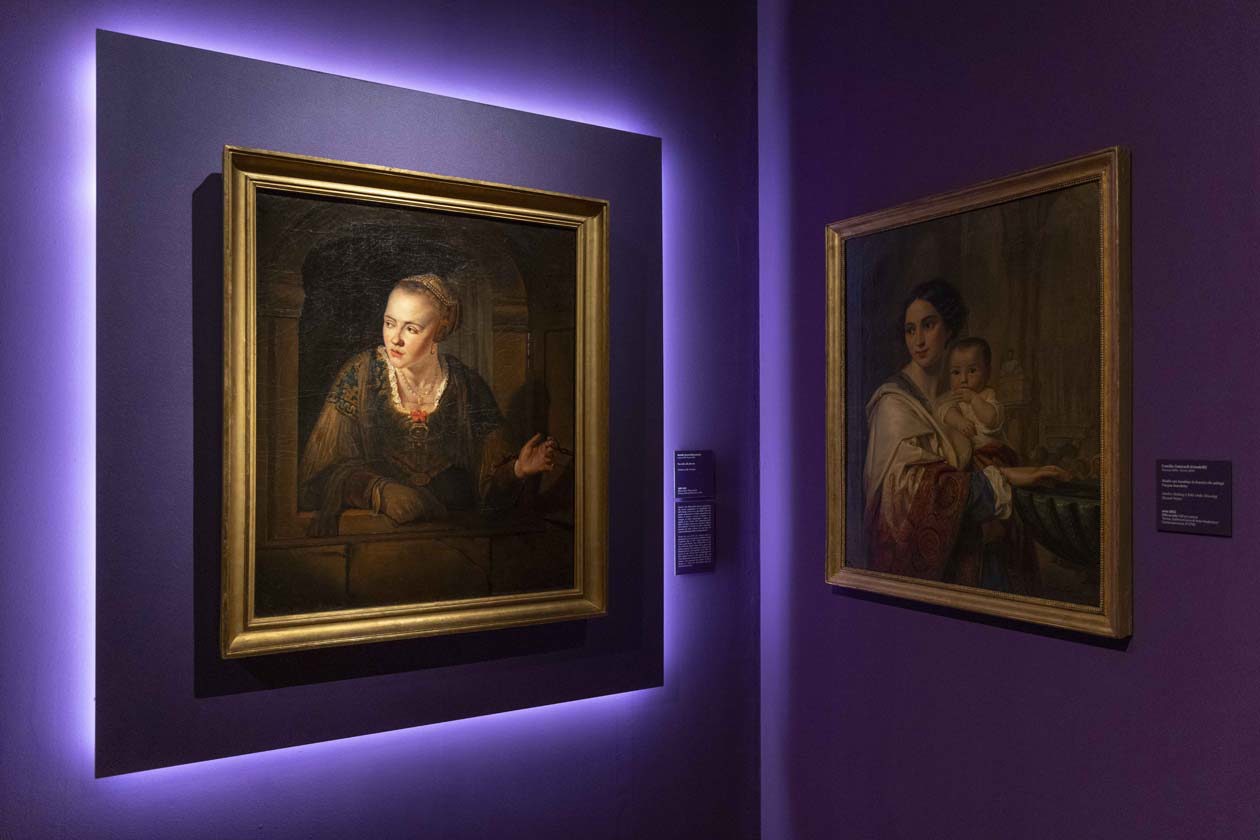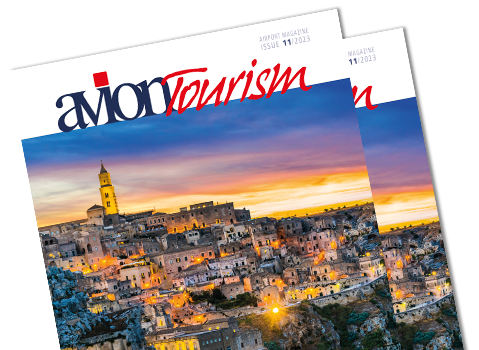31 October 2024
In Rome the exhibition "Rome painter"
"Women artists at work between the sixteenth and nineteenth centuries" at the Museum of Rome at Palazzo Braschi until March 23, 2025 to tell the artistic presence of women in the capital of Rome
The numerous women artists who between the sixteenth and nineteenth centuries chose Rome as a center of training and a place of artistic production, contributing to a rich and diversified cultural heritage often ignored by historiography, are the protagonists of the exhibition "Rome Painter. Female artists at work between the sixteenth and eighteenth centuries". The exhibition, which can be visited at the Museum of Rome at Palazzo Braschi from 25 October 2024 to 23 March 2025, brings to light the work and talent of these extraordinary figures.

Exhibition "Rome painter. Artists at work between the sixteenth and nineteenth centuries". Preparation. Copyright © Monkeys Video Lab
A wide-ranging exhibition project
The exhibition brings together about 130 works created by 56 artists, some permanently active in Rome, others present for more or less prolonged periods. The exhibition starts from the collections of the Civic Museums of the Capitoline Superintendence, with about fifty works from the Gallery of Modern Art, the Napoleonic Museum, the Pinacoteca dei Musei Capitolini and, in particular, the Museum of Rome. It then connects to prestigious collections of national and international museums, including the Accademia di San Luca in Rome, the Brera Academy in Milan, the Uffizi Galleries in Florence, the Pilotta in Parma, the Royal Museums in Turin, the National Portrait Gallery in London and the Thorvaldsen Museum in Copenhagen.

Exhibition "Rome painter. Artists at work between the sixteenth and nineteenth centuries". Preparation. Copyright © Monkeys Video Lab
The protagonists of Roman art
The aim of the exhibition is to reconstruct the professional and biographical events of women artists whose talent has often been ignored or obscured. Among the protagonists, Maria Felice Tibaldi Subleyras, Angelika Kaufmann, Laura Piranesi, Marianna Candidi Dionigi, Louise Seidler and Emma Gaggiotti, whose works were kept in storage, as well as more famous figures such as Lavinia Fontana, Artemisia Gentileschi and Giovanna Garzoni. Alongside these names, other lesser-known artists stand out, such as Giustiniana Guidotti, Ida Botti and Amalia De Angelis, whose artistic production has been rediscovered thanks to recent research.

Exhibition "Rome painter. Artists at work between the sixteenth and nineteenth centuries". Preparation. Copyright © Monkeys Video Lab
A thematic and chronological itinerary
The exhibition, structured chronologically and by themes, illustrates the gradual insertion of women painters into the international art marketand the slow but determined conquest of access to training in the main institutions of Rome, such as the Accademia di San Luca and the Accademia dei Virtuosi al Pantheon. Rome is thus confirmed not only as a place of learning and market, but as a vital center for the affirmation of women artists, who with their work have contributed to consolidating the city's reputation as a reference point for creative careers in the modern age. The title of the exhibition recalls the seventeenth- and eighteenth-century historiographical tradition, which attributed their own artistic identity to various Italian pictorial schools, such as Bologna in Malvasia's "Felsina Pittrice". In the same way, this exhibition aims to restore to women artists the central role in Rome Capital of the Arts between the sixteenth and nineteenth centuries.

Exhibition "Rome painter. Artists at work between the sixteenth and nineteenth centuries". Preparation. Copyright © Monkeys Video Lab
The sections of the exhibition
Visitors are welcomed at the entrance to the exhibition by the portrait of an unknown artist, painted by Pietro Paolini in the early decades of the seventeenth century, who, with an intense gaze and work tools in hand, embodies the pride of the craft.
The first room is dedicated to the Bolognese Lavinia Fontana, with works never exhibited before, including a rare self-portrait on copper. This is followed by three works by Artemisia Gentileschi, illustrating different phases of her career: Cleopatra, inspired by classical statuary; The Dawn, from the original iconography; Judith and the servant with the head of Holofernes, a darker reinterpretation of a work by her father Horace. Also standing out is the only known work by Giustiniana Guidotti, exhibited for the first time, on which her signature appears, a symbol of visibility for female artists.
An entire room is dedicated to still life, a genre in which Laura Bernasconi and Anna Stanchi excelled. A precious album from the Accademia di San Luca, with botanical miniatures by Giovanna Garzoni from Ascoli, represents an exceptional loan.
The section closes with two further rooms: one dedicated to portraiture, with works such as the only known painting by Claudia Del Bufalo, depicting her sister Faustina in a wedding dress, and another focused on graphics, miniatures and the architect Plautilla Bricci, represented by some nineteenth-century facades of her famous Villa del Vascello.

Exhibition "Rome painter. Artists at work between the sixteenth and nineteenth centuries". Preparation. Copyright © Monkeys Video Lab
The nineteenth-century itinerary and the portraits of the protagonists
The international artist Angelika Kauffmann is represented by five works that tell the story of her activity in Rome, where her home-atelier became a meeting point for intellectuals. The exhibition continues with the engraver Laura Piranesi and other artists such as Élisabeth Vigée, Caterina Cherubini and Maria Felice Tibaldi, who managed to achieve success in academies and on the market.
In the nineteenth century, the exhibition is enriched with portraits and self-portraits portraying artists, singers, actresses and intellectuals, reflecting the determination of women who contributed to social change. Among the works, the Family Portrait of Emma Gaggiotti and her Venus in the Uffizi and Holy Family in the Vatican, both recently restored.

Exhibition "Rome painter. Artists at work between the sixteenth and nineteenth centuries". Preparation. Copyright © Monkeys Video Lab
The conclusion of the exhibition
The itinerary closes with three thematic rooms: religious and historical subjects, portraits, and landscapes and still lifes. In the nineteenth century, Roman women artists enjoyed greater freedom than in the past and their numbers increased, with figures such as Erminia De Sanctis and Virginia Barlocci, whose works emerged both from the Capitoline collections and from the antiques market, making these artists an absolute novelty for the public.
The exhibition ends with a map, available both on display and in brochure format, which guides visitors to discover the works of the artists present in public places in Rome.
To complete the exhibition, a series of meetings open to the public, with international experts and scholars of gender studies, will explore the role of women in various cultural and historical fields.
The exhibition is accessible to a wide audience and audio insights and tactile visits are planned for people with visual and hearing impairments, making the exhibition inclusive and open to all. Promoted by Roma Capitale and the Department of Culture - Capitoline Superintendence of Cultural Heritage, the exhibition is curated by Ilaria Miarelli Mariani, Director of the Civic Museums Directorate of the Capitoline Superintendence, and Raffaella Morselli, professor at the Sapienza University of Rome, with the support of Ilaria Arcangeli (Ph.D, University of Chieti Gabriele D'Annunzio). The organization is entrusted to Zètema Progetto Cultura, while the catalog is published by Officina Libraria.
Exhibition "Rome painter. Artists at work between the sixteenth and nineteenth centuries"
When: 25 October 2024 - 23 March 2025. Where: Museum of Rome - Palazzo Braschi (rooms I floor), Piazza San Pantaleo, 10 - Piazza Navona, 2 - Rome. Hours: from Tuesday to Sunday 10:00 am - 7:00 pm. Last admission one hour before closing. 24 and 31 December 10:00-14:00. Closing days Monday and 25 December. Tickets: full €13.00, reduced €11.00. Info: Tel. 060608.
By the Editorial staff of Avion Tourism Magazine
Text source and photo: Exhibition Press Office
Photo: Copyright © Monkeys Video Lab
Photo Rome: Copyright © Sisterscom.com / Shutterstock
Rome. Photo: Copyright © Sisterscom.com / Shutterstock
You might be interested in
Destinations

Events
Milan Design Week 2025
From 8 to 13 April, the Salone del Mobile and the Fuorisalone will transform Milan into the capital of Design. Districts, installations and events not to be missed
Destinations

Events
Ireland, land of the winter solstice: a journey through history, spirituality and nature
A guide to the mystical places and events celebrating the winter solstice on the emerald isle
Destinations

Events
Felice Casorati at the Royal Palace in Milan
A major retrospective celebrates the artist symbol of the Italian twentieth century, from 15 February to 29 June 2025




